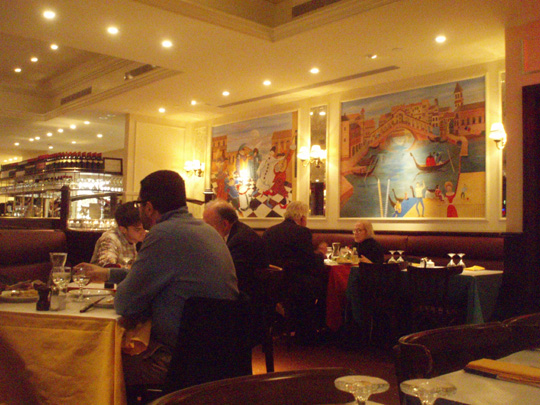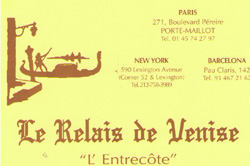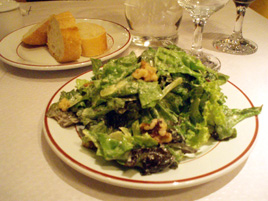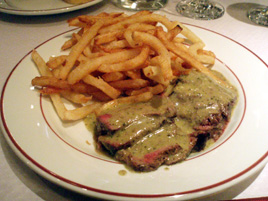The Mark by Jean Georges
 Tuesday, April 13, 2010 at 04:14PM
Tuesday, April 13, 2010 at 04:14PM 
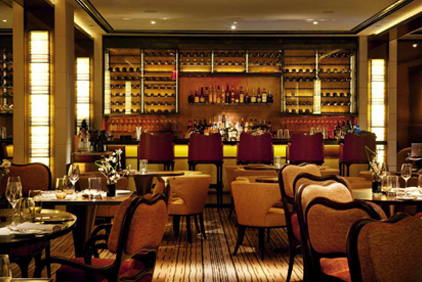
Among four-star chefs, none has syndicated himself more broadly than Jean-Georges Vongerichten. His flagship, the eponymous Jean Georges, remains one of the sublime dining experiences in the city. There are at least fifteen more restaurants (in multiple cities) that he owns directly, and many others—various Vongs and Spice Markets—where he pockets a consulting fee without managing the property.
The rap against these places is that they seldom command his attention after they’ve opened and the (usually) rave reviews have rolled in. This spring brings two new Vongerichten restaurants to New York, raising the city’s total (by my count) to nine. Even for him, it’s an ambitious agenda.
The Mark by Jean Georges is a fancy place in an even fancier Upper East Side hotel, but the menu is surprisingly low-brow, with its $22 hamburgers and pizzas in the teens. There’s the obligatory $89 ribeye for two, but most of the entrées are below $30, and very few of them set the pulse racing. The servers marching through the dining room with their silver platters are incongruous with the lack of ambition on the plate.
The fit-out is gorgeous. On a recent Saturday evening, the Mark was a mixture of the old-school Upper East Side crowd, European and Russian accents, and fashion-plate trophy dates in party dresses. Many of the women could be illustrations in a costmetic surgery textbook, illustrating both the right and the wrong way of doing it.
The restaurant, at least early on, is not lacking for business. We couldn’t do any better than 9:30 p.m., even a month in advance. We arrived early for drinks, only to find a cocktail menu as uninspired as the food. However, it was worthwhile for the people-watching alone.
I’ve never seen so many rent-a-dates. One seated near us had been promoted to concubine. “Can I rent an apartment under $10,000?” Her apparently stoned companion, who was at least twice her age, didn’t have an intelligible answer. Later on, she pouted, “I’ve been waiting patiently for a week!”
 What about the food? Oh yes, they do serve food here. Some of it is good. A small black truffle fritter was served as an amuse-bouche.
What about the food? Oh yes, they do serve food here. Some of it is good. A small black truffle fritter was served as an amuse-bouche.
A black truffle pizza with fontina cheese ($16; right) continued the theme. We shared it, and that’s the way to go. Although it is excellent, even truffles can be cloying if you eat too much of them. But I can’t complain about the price. At $16, this wouldn’t have been a bad deal even without truffles.


The entrées were standard-issue hotel fare: a pedestrian linguine with clams ($30; left); an overly salty parmesan crusted chicken ($23; right).
The wine list has decent selections that don’t break the bank. I chose a $43 Syrah. Rather oddly, the sommelier brought a $65 bottle, which he opened before showing it to us. As it was quite clearly not what I had ordered—not even close, actually—the restaurant had to eat it, which was done without complaint.
There is, of course, much more to the menu than what we tried, but we were left with the impression of decent hotel food served in a gorgeous room where the people-watching trumps the cuisine. Perhaps Vongerichten is skipping the inevitable decline, and launching with mediocrity in mind from the beginning.
The Mark by Jean-Georges (25 E. 77th St. near Madison Ave., Upper East Side)
Food: *
Service: *
Ambiance: **
Overall: *












































